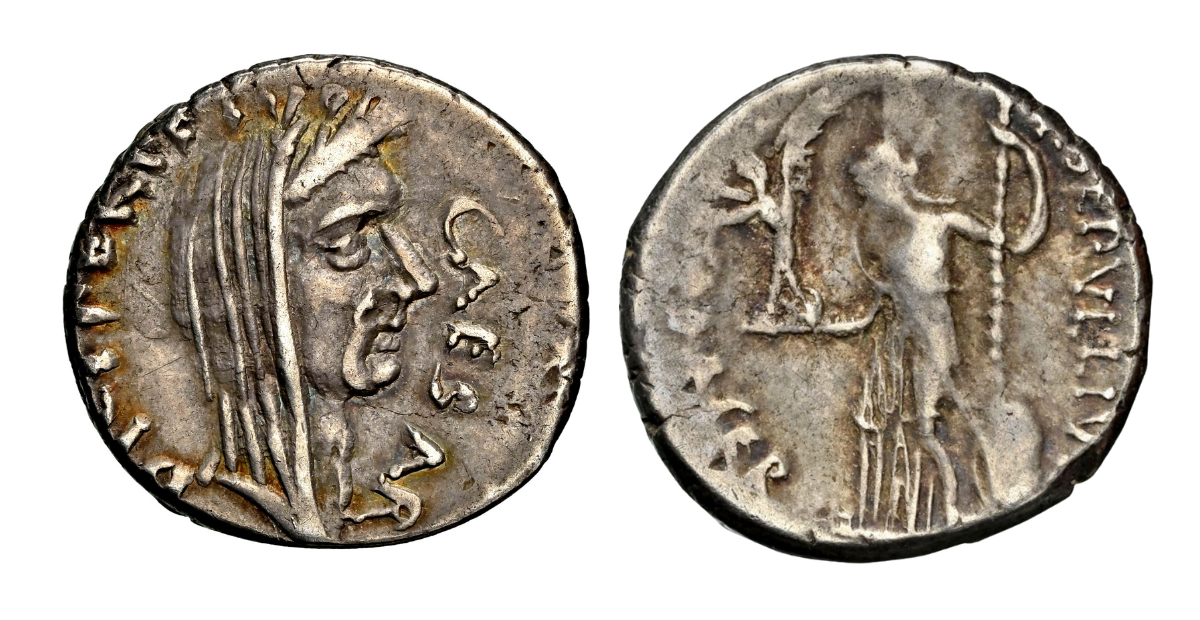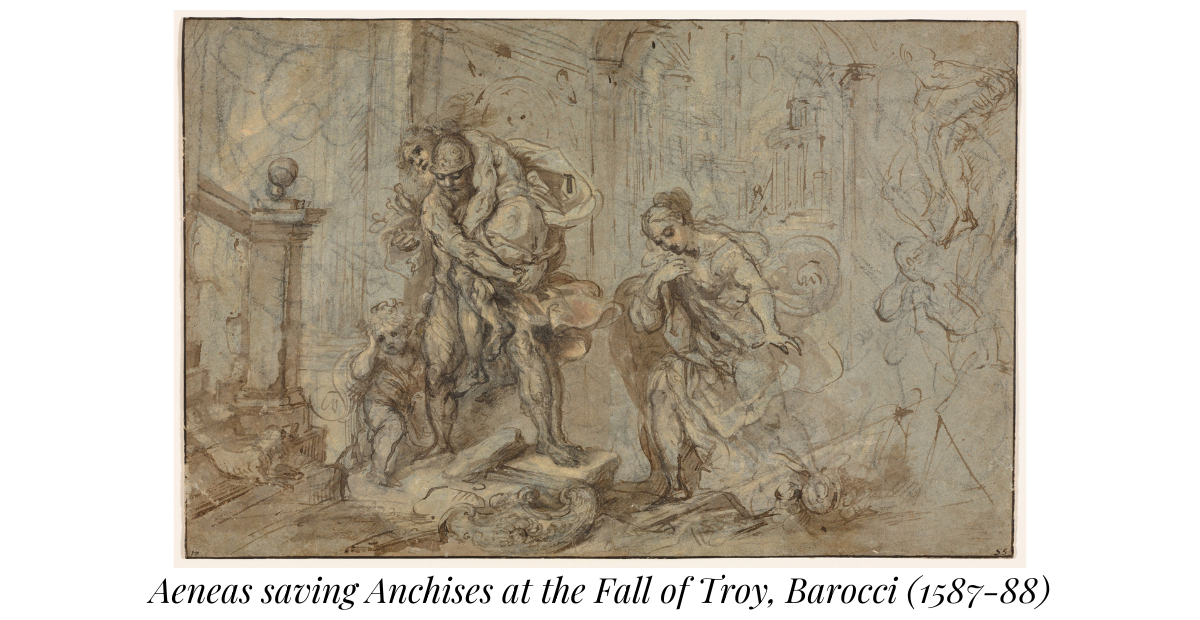Give unto Caesar: the Julius Caesar Denarius
28/03/2025 | George Champ , Emma Garnham

This fine example of a Julius Caesar Denarius is available in our much-anticipated Coins, Watches and Jewellery timed auction.
It was minted by P. Sepullius Macer, one of the 4 moneyers active in Rome during the late Republic. At over 2,000 years old, it is a captivating piece. The face features the portrait of a veiled and wreathed figure, one of the most famous men to have ever lived - Julius Caesar.

The reverse of the coin depicts Venus holding Victory. The choice to depict Venus was itself meaningful, drawing on the family legend that the Julians were descendants of the goddess herself. The legend goes that the Julian line could be traced back to Venus through her legendary son, Aeneas. Aeneas is a key figure in the foundation myth of Rome, who supposedly led Trojan refugees from the destroyed city, to a more peaceful and rewarding life in Italy, becoming the early ancestors of the Romans. Caesar was careful to cultivate this link to his divine lineage, featuring and honouring Venus in many of his works.

Returning to the portrait, Caesar is represented in the verist style popular in the Roman Republic. Verism centres around depicting the aged experience of the subject. In the Roman Republic, men of the senatorial class were confined by the Cursus Honorum, or career ladder, to only gain positions of status after a certain age. For example, the prestigious office of Consul had a minimum age of 42 years. In such a society, a representation of maturity conveyed a sense of an enhanced status gained over a lifetime.
Although Caesar adopted the traditional and popular veristic art style, Caesar also broke the mould. Indeed, Caesar was the first Roman leader to feature his own portrait on coins, setting a precedent that would, of course, be picked up by future leaders. Such an honour was previously only granted posthumously. In the late Republic, therefore, the choice to depict yourself on coinage was unusual. Moreover, it paralleled the personal glorification more commonly associated with kings, whom the Romans had proudly driven out centuries before. As such, any echoes of kingship were anathema to the Roman Republic. It was his slide towards overt kingship which led to Caesar’s brutal murder on the Ides of March in 44 BCE, by the Liberatores, or liberators.
However, the exact background of this coin has become obscured by the mists of time. The veiled and wreathed depiction seen here is typically associated with the deceased. As such, it is possible that Caesar's successor, Octavian, issued the coin. As Caesar's adopted son and successor, the imagery seen here gains further potency. Immediately after Caesar's murder, Romans grappled for power. First between the Liberatores and Second Triumvirate, and later between Octavian and Mark Antony. Part of this contest was played out through the minting of coins, carefully designed to send a favourable message on each side. As such, Octavian may have been emphasising his own divine ancestry as a Julian. Meanwhile, the veiled representation often associated with piety, cements Caesar's deified image. Indeed, Octavian began signing himself with the title 'Divi Filius', son of a god.
From the vantage point of the 21st century, we know that Caesar's life and career enabled the transition to the Roman empire by his adopted son and successor, Octavian/Augustus, the first Princeps. The rest, so they say, is history. Despite his brutal death, Caesar's skill and achievements were admired by his Roman successors, who adopted the honorific 'Caesar' into their own imperial titles. Indeed, this tradition has continued to recent times - both the titles Kaiser and Tsar derive from 'Caesar'.
A figure whose shadow is cast across the ages of European history, Caesar is one of the most recognisable and famed men of history. Contemporary objects make the distant past vivid and tangible. To hold a coin that passed through the palms of ancient Romans is to become a part of its history.
The Julius Caesar Denarius coin is lot 2 in the Coins, Watches and Jewellery timed auction, which is online and open for bidding now until 17:00 BST on 9th April.

